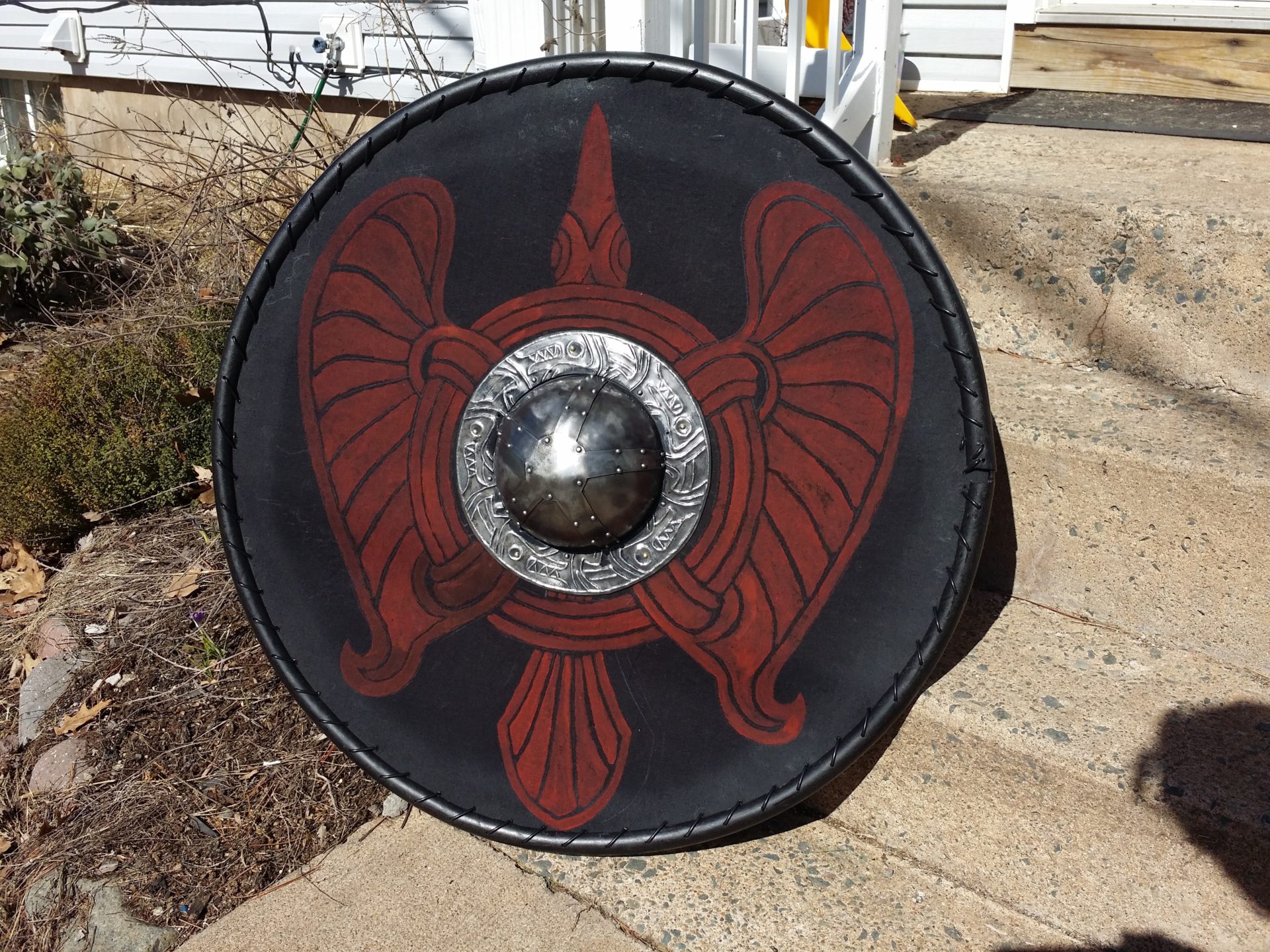



By Lady Freydis Egilsdottir
Years ago, I made a pair of Norse shoes, based on one of the Jorvik Viking boot finds, that have served me very well over numerous events and many years. In fact, I wore them so much that I wore a hole through one of the soles; and the stitching, originally done in a white waxed cotton (dental floss, actually, making the shoes ‘minty fresh’) when the fake sinew kept breaking, was wearing away and looking very ratty indeed.
So, having found some nicer, slightly heavier waxed cotton at Tandy’s that matched better, I decided it was time to pull them apart, redo the stitching, and make some repairs.
Originally I was going to replace both the soles entirely, but decided that, since repairing them was period, it would be simpler (and take less leather) to just do that instead.
For the hole, I made a leather patch that went under the entire ball of that foot, shaving down the edges of the patch as much as possible, so as to make it as unobtrusive as could be under my foot. I then glued it in place with contact cement, which worked very nicely, although you could still see the hole from the outside, of course. So I filled in the hole as well, building the shallow gap up in layers with contact cement and leather shavings from the patch, and ended up with something you can barely see at all, especially now that I’ve walked on it a bit.
I then stitched it all back together, using the original stitching holes, and replaced the beat-up leather laces.
I’m very pleased with the result (and can’t feel the patch at all when I’m walking), and hope to get many more years of use out of them!












 By Lord Mikhail Heimdallson
By Lord Mikhail Heimdallson




